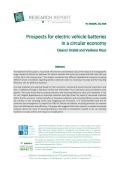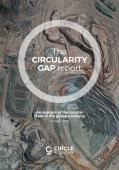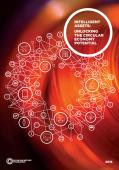

Resource efficiency is a key approach to decoupling economic growth from environmental degradation while enhancing human well-being. It stimulates innovation, the creation of new industries, and boosts economic competitiveness. Ultimately, it is good not only for the environment but also for the economy.
Resource efficiency is both a requirement and an opportunity for sustained economic prosperity in G20 countries - a dynamic group of leading economies with a diverse set of visions and approaches for sustainable development, and member states all over the world. The collective impact of this group could drive large-scale transformation in a direction that can lead us to the achievement of the Sustainable Development Goals.

The objective of this paper is to provide information and estimates about the impacts of managing the large number of lithium-ion batteries for electric vehicles that enter the market and will reach the end of their life in the coming years. The analysis compares two different hypothetical scenarios involving different levels of ambition regarding battery collection rates for recycling in Europe and the recycling efficiency rate for different materials.

Our world economy is only 9.1% circular, leaving a massive ‘Circularity Gap’. This alarming statistic is the main output of this first Circularity Gap Report, in which we launch a metric for the circular state of the planet. Taking the United Nations’ Emissions Gap Report as inspiration, the Circularity Gap Report provides a framework and fact-base to measure and monitor progress in bridging the gap, year on year. Being able to track and target performance via the Global Circularity Metric will help the global community engage in uniform goal-setting and guide future action in the most impactful way.
The report outlines four steps to take action in bridging the circularity gap:

